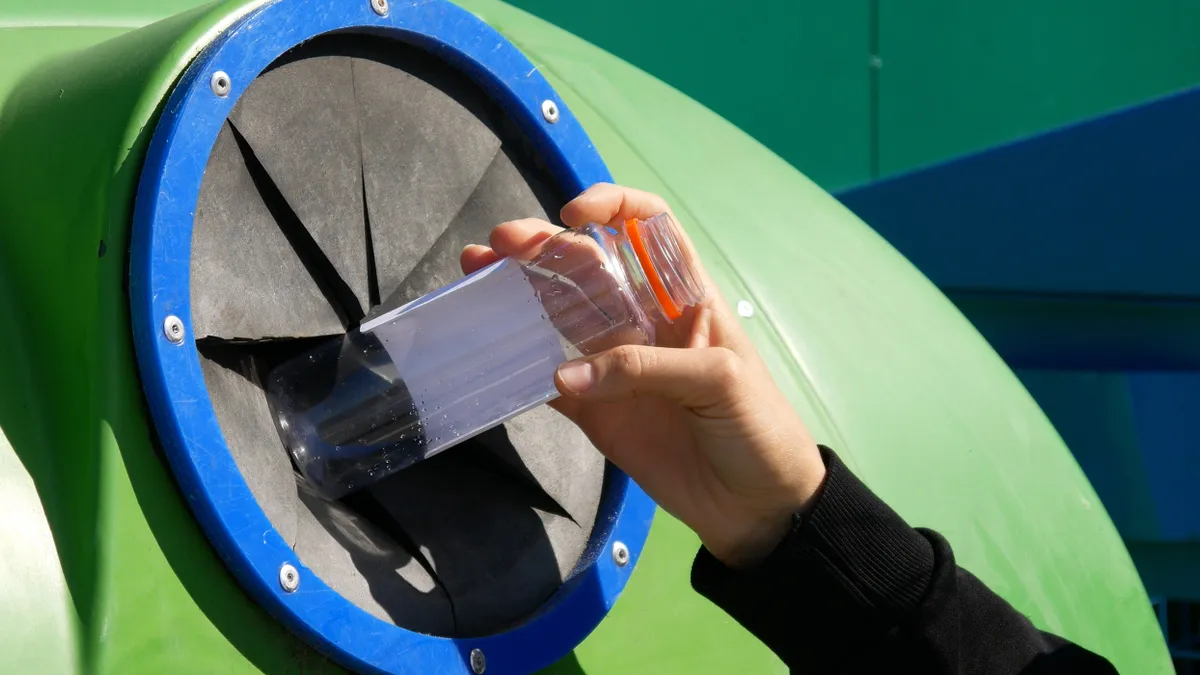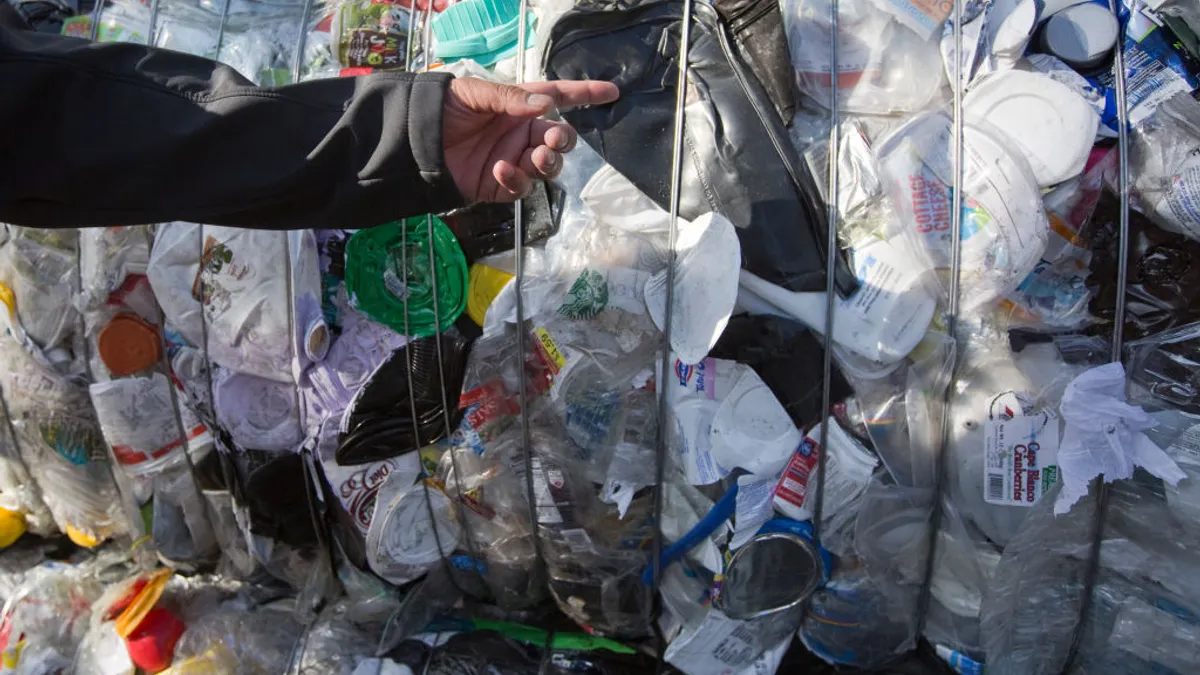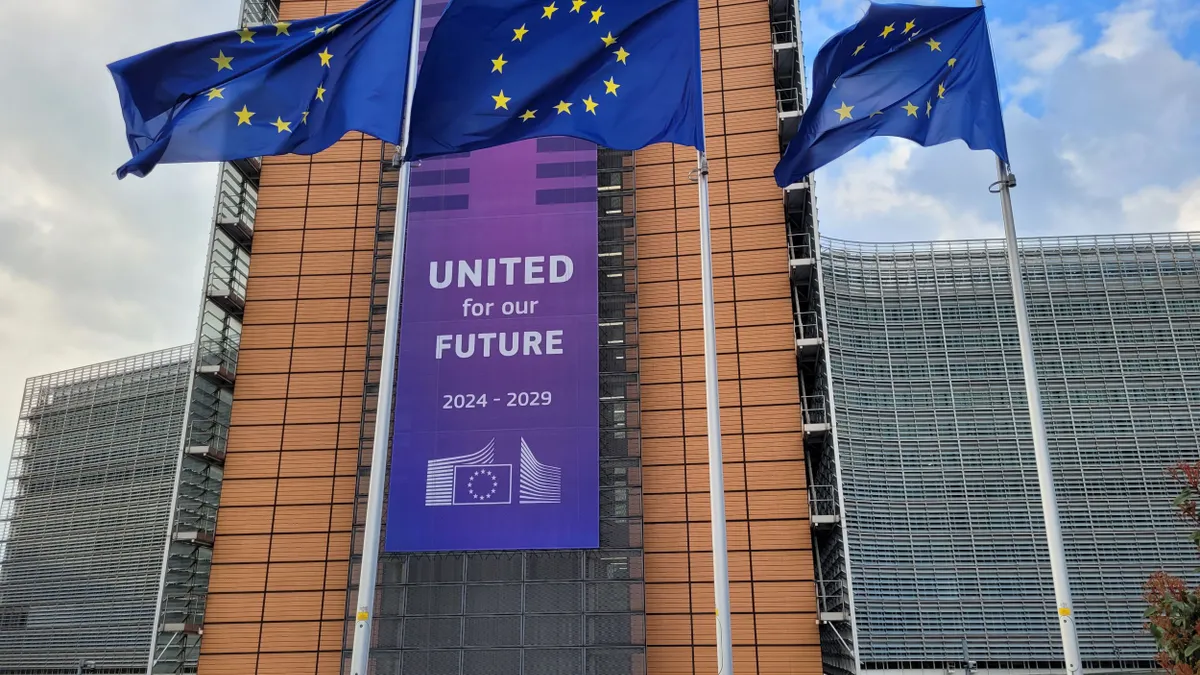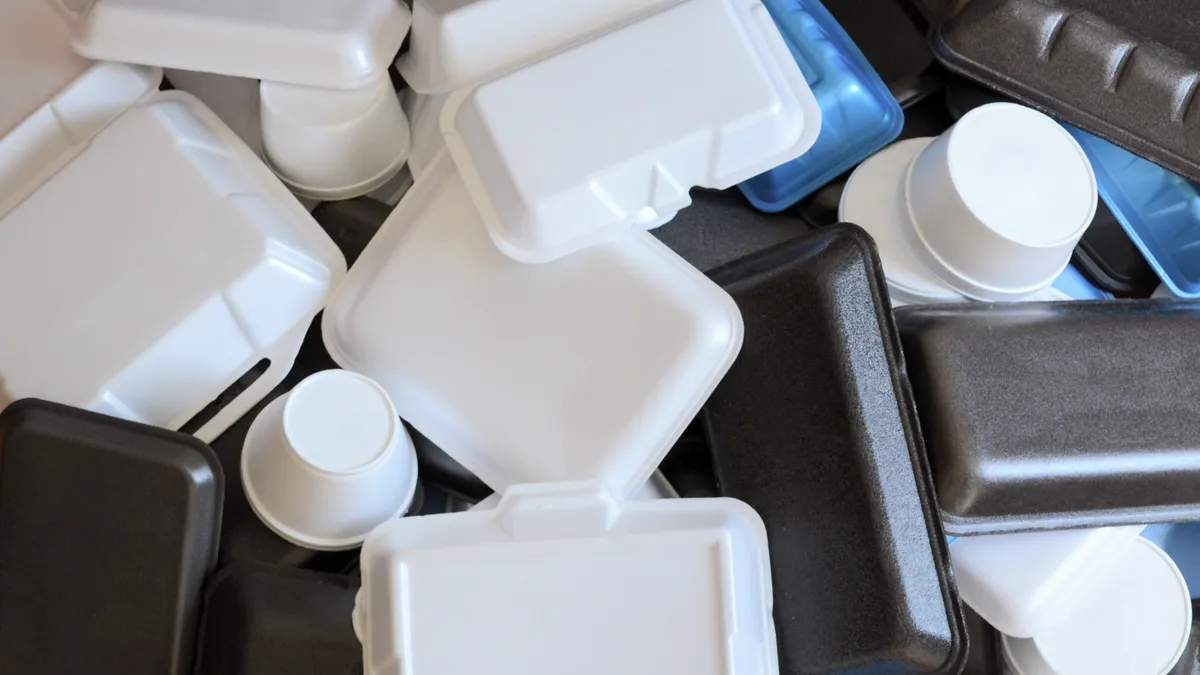A lull in enacting extended producer responsibility for packaging laws in 2023 has not dampened attention and momentum to the issue — far from it. Across packaging types, it’s one of the top areas that industry leaders discuss on their policy radars for 2024.
Along with EPR programs, some groups are hoping for a more prolific year for container deposit legislation to boost the recovery and supply of recycled material. Potential regulatory progress this year in California and at the national level could also offer more clarity on what labeling on packaging will be acceptable going forward.
Other domestic issues groups are watching include action on recycled content, expanded polystyrene foam restrictions and U.S. EPA programs around toxics, plastic pollution and food waste reduction. This is against a backdrop of international momentum, as nations intend to wrap up a global plastics agreement in 2024, and the EU is expected to complete negotiations on new packaging waste rules. And this all comes amid an election year in the U.S. which groups expects will impact state and federal activity.
EPR: Needs assessments, rulemaking and legislative debates to advance
In 2023, states legislatures, including in Connecticut, Hawai’i, New Jersey and New York all discussed versions of EPR for packaging. Flexible Packaging Association President and CEO Alison Keane expects this year will see activity in “a lot of the same states that have tried to pass legislation in the past, and I think we'll probably see new entrants as well.” It is also poised to be an important year for advancing regulations to implement these laws in California, Colorado, Maine and Oregon, with requirements supposed to come into force in 2025 and beyond, Keane noted.
Substrate or category-specific trade groups, whether focused on cans, flexibles or otherwise, are attentive to ecomodulation, a method of informing and structuring fees based on environmental considerations and other factors.
“Our packaging type will probably pay more from an ecomodulation standpoint than a lot of other more readily recyclable packaging,” Keane said, so FPA wants to ensure in implementation that funds will support infrastructure for recycling flexibles versus for packaging types that are already more easily recyclable.
While no additional states joined the four states in enacting full-fledged EPR laws last year, Illinois and Maryland did pass bills pursuing needs assessments. Glass Packaging Institute President Scott DeFife said the slowdown in passing laws after a flurry of activity in 2021 and 2022 isn’t necessarily surprising, given a tendency to watch first movers. DeFife described establishing a needs assessment and advisory board as a “down payment” toward augmenting recycling that constituents desire, but it is tough to fund.
“They couldn't get political agreement on the full thing, but they knew they wanted and needed to start it,” DeFife said. Some groups believe 2024 could see more states taking this approach. “When the budget realities meet the breadth of policy challenges, you get a state that may decide, ‘we're gonna start the process with a needs assessment,’” DeFife said.
It’s “the year of the needs assessment,” said Dan Felton, executive director of Ameripen. “Some people have suggested the needs assessment is sort of a ‘kill the concept’ idea. We don't really view it that way. We're presuming Illinois, presuming Maryland’s going to at some point enact a full EPR for packaging law. So setting it up with the right sort of structure for the needs assessment is really important.”
Felton said more states have tacked other packaging regulation issues into EPR bills, such as source reduction goals or toxics regulation efforts. “We're going to continue to monitor the additional issues we're seeing coming into EPR,” Felton said.
Ameripen expects to continue to see recycled content proposals, though they seem to have less traction than other policy types, Felton said. But that could be another policy area that finds its way baked into or attached to EPR, or labeling, legislation.
Even without specific recycled content legislation, EPR programs coming online are also poised to catalyze recycled material market development, according to one leader at the Circular Action Alliance, a brands-led producer responsibility organization engaged by California, Colorado and Maryland.
“[W]e’re going to see an increase in supply of materials which will need an outlet. So we see that as a healthy supply-demand balancing force to increase supply when we know that demand is going to be there in the future,” said CAA Board Chair Charlie Schwarze in a late 2023 interview.
Meanwhile, the Printing United Alliance — a trade association for printers serving packaging, industrial, graphic, electronics and other printing markets — highlighted its ongoing support for recycling bills at bay in Congress that it says could enhance recycling infrastructure without enacting EPR laws. The bipartisan Recycling Infrastructure and Accessibility Act and Recycling and Composting Accountability Act were reintroduced last year.
Deposit return efforts evolve
The number of states with bottle bills stands at 10, but California and Maine passed laws last year expanding materials types and updating sorting requirements. Advocates are looking to add more container deposit programs in 2024, through EPR and otherwise, while also eyeing a national program.
In cases where EPR programs are enacted, GPI wants them to incorporate strong deposit return system components to boost material recovery and circularity.
“We are hopeful. We think it should be a part of any of the debates that happen with regard to EPR,” DeFife said, noting that Massachusetts, Minnesota, New York, Rhode Island, Vermont and Washington are among the states for such discussions.
The Can Manufacturers Institute is focused on the establishment of new bottle bills — which it calls recycling refund legislation — particularly in Illinois, Minnesota and Washington, explained Scott Breen, senior vice president of sustainability.
The Illinois Senate is considering SB85, which was initially introduced last January. In Minnesota, companion bills HF3200 and SF3260 were introduced in 2023 and are set to be amended in 2024. The Washington Recycling and Packaging Act, which included both EPR and bottle bill components, did not move forward in 2023. For 2024, those components are being split into two separate bills.
A U.S. Senate subcommittee hearing last September explored the potential for a national bottle bill. Advocates envision benefits at scale, while skeptics voice concerns about weakening existing recycling infrastructure and diverting valuable materials from MRFs.
2024 could be a momentum-building year for a national approach, Breen said. “We would love to see a modern, efficient recycling refund system occur at the national level because that can most significantly increase recycling rates most efficiently,” Breen said. But passing such a bill nationally is harder than at the state level.
“My hope is that the groups that want to see a national recycling refund will come together and put forth a bill in collaboration with bipartisan legislators at the national level that can work for all the different states. We have to increase the group of supporters to move the bill, so hopefully we can start in that process in 2024,” Breen said.
Seeking clarity on labeling
Standardization around labeling guidance or rules remains elusive, but this year groups are watching notable progress in California and potentially at the national level.
California is taking key steps in 2024 toward implementing its nation-leading “truth in labeling” law. Just before the new year, CalRecycle released the SB 343 preliminary findings report for the 2021 law’s required characterization study of material types and forms that routinely become feedstock for new products and packaging.
FPA’s Keane noted that SB 343 could have wide-reaching impact on certain recycling labels used for consumers to check whether they can recycle flexible or film packaging in drop-off programs. Keane noted the importance of trying to bring harmonization to labeling to avoid differences across states.
Ameripen expects to continue to see states putting forth their own versions of labeling legislation, which presents more opportunities for conflict between states.
While gaining federal traction may be a long process, Ameripen hopes there will be movement on the issue this year.
“We definitely have a strong belief that something should be done at the federal level,” Felton said, noting the Federal Trade Commission’s engagement on the issue via the ongoing Green Guides review. “We expect to see some legislation on this issue in 2024.”























